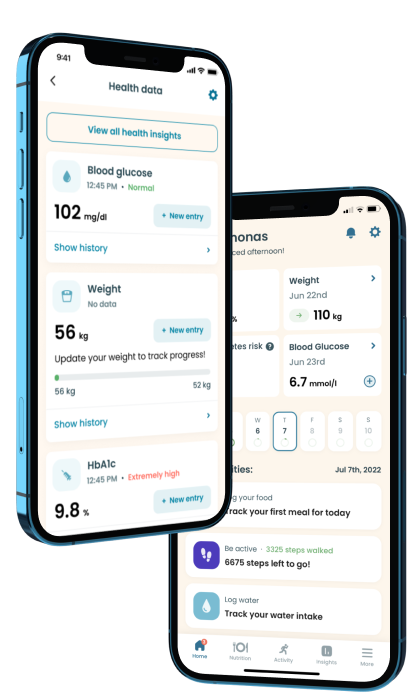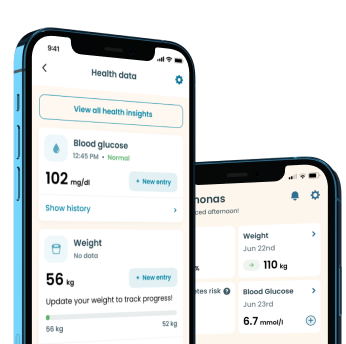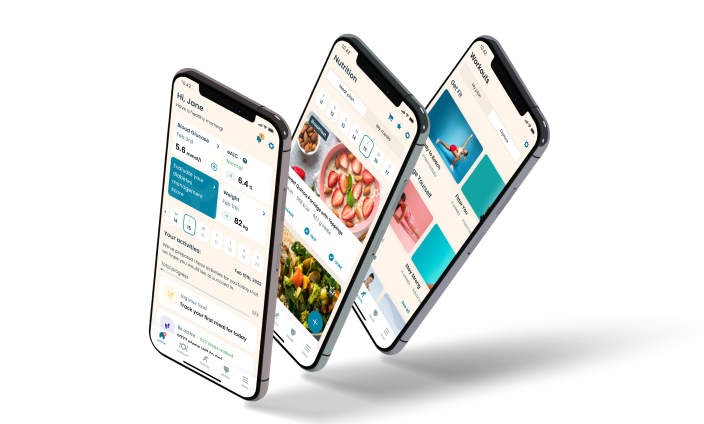Cranberries and Diabetes

Great
33
349 kcal
Cranberry is termed a superfood due to its numerous health benefits. Notably, cranberry juice, a product of these small, hard, red fruits, recently made headlines for its ability to prevent type-2 diabetes — an astounding discovery is deserving of attention.
This article explores the relationship between cranberries and diabetes and why you should consider adding this food to your list of favorite foods today as a diabetic.
Nutritional value
- Protein 24.4 g
- Carbohydrate 60 g
- Fat 1.23 g
- Fiber 25 g
- Sugar 3 g
- Cholesterol 0 g
Nutritional Value of Cranberries
Carbohydrates and fiber are the main components of cranberries. According to the USDA, one cup of whole cranberries yields 12 g of carbs and 3.8 g of fiber. You also get a meager 46 calories per cup, a perk for individuals looking to shed weight while enjoying tasty treats.
Moreover, cranberry juice has a glycemic index (GI) of 59, while sweetened cranberry raisins (craisins) have a GI of 64, enlisting them both in the medium GI food category. Additionally, dried cranberries offer a medium glycemic load (GL) of 19 per ¼ cup. These features result in a reduced risk of blood glucose surges, especially when you eat them in moderation.
Take a quiz
Discover what Klinio app can do for you
Healthy diabetes meal plan crafted just for YOU

Personalized workouts with no equipment needed

Track your progress with smart tracking tools

Benefits of Cranberries for Diabetes
Lowers the Risk of Heart Disease
Cranberries are high in flavonoids, which are beneficial to cardiovascular health in the majority of people. Namely, they exert a wholesome effect on blood pressure, cholesterol levels, and insulin resistance. The polyphenols present in cranberries (e.g., anthocyanins) prevent plaque from forming on heart artery walls, and their antioxidant qualities lower oxidative stress in blood pressure.
These elements play a role in preventing heart disease caused by a lack of activity, a high-fat diet, and age.
Aids Weight Loss
A person's chance of having type 2 diabetes increases if they are overweight or obese. In addition, weight gain makes controlling blood sugar levels considerably more difficult for persons with diabetes.
Thankfully, cranberry juice has an emulsifying impact on the body’s accumulated fats aiding weight loss. Moreover, due to its high fiber content, it keeps you fuller for longer, meaning you’ll eat less.
Rich in Omega-3 Fatty Acids
Cranberry seeds contain omega-3 fatty acids, which help to protect your heart by lowering triglycerides. Since the body does not produce these polyunsaturated fats, they must be obtained through diet. Notably, in addition to promoting heart health, omega-3s promote healthy brain function and proper growth and development.
Regulates Blood Pressure
Cranberries are well-known for their ability to lower blood pressure due to their anthocyanin content. In healthy people, it decreases arterial stiffness and regulates central blood pressure. More specifically, an increased dietary anthocyanin intake can lower central systolic blood pressure, pulse wave velocity, and mean arterial pressure, according to a study.
Another study found that increasing the intake of this potent chemical reduced inflammation, LDL, and HDL cholesterol levels in persons with hypercholesterolemia — a potential mediator of raised blood pressure.
Research on Diabetes and Cranberries
Several studies validate the relationship between the intake of cranberries and diabetes. Namely, an eight-week study observes the effect of polyphenol-dense cranberry extract beverage (CEB) on 78 obese/overweight subjects with abdominal adiposity. Remarkably, the daily consumption of a single dose of this beverage yields improved blood sugar management, inflammation, and HDL lipoprotein levels — essential for lowering cardiovascular disease risk factors.
Another study looks at the impact of a variety of flavonoid chemicals on cardiovascular disease. Notably, considerable reductions in body mass index (BMI) and systolic blood pressure (SBP) ensued. While SBP reduction was more significant in participants aged 50 and above, a more pronounced increase in HDL cholesterol levels occurred in subjects below 50.
Similarly, one research proves that the daily intake of 1–3 glasses of 27% pure cranberry juice over three months increases HDL (“good”) cholesterol by 10% — equal to a 40% decrease in heart disease risk.
Should You Take Cranberries as a Diabetic?
Although various research have validated the hypoglycemic effect of cranberries, some research propose that the intake of 100% fruit juice (including cranberry juice) doesn’t significantly affect glycemic control. This means that while cranberries can be an excellent addition to your diabetic diet, you shouldn’t rely on its juice extract for optimal diabetes management.
Risks of Cranberry Consumption
Cranberries are generally safe to consume but are not 100% advised for some. Namely, you may increase your chances of developing kidney stones if you drink a lot of cranberry juice over time. A stomach upset, vomiting, and diarrhea are also possible adverse effects of consuming too many cranberries.
Hence, if you plan on consuming cranberries, it’s advised you speak to your doctor on the recommended portion size.
How to Add Cranberries to Your Diabetic Diet
While science validates the role of cranberry in preventing common diabetes complications like cardiovascular complications, they shouldn’t be consumed indiscriminately. Here are some suggestions for including cranberries in your diet:
- Add it to oatmeal or cereal
- Add cranberries to a salad
- Add fresh cranberries to an apple dessert.
- Make a homemade mix of cranberries and other fruits
- Add fresh or dried cranberries to a cookie or muffin
Summary
Overall, cranberry, when consumed in the whole form, does present significant health benefits to people with diabetes. However, the intake of the juice extract should be done with discretion, especially in people with a history of nephrolithiasis. Hence, consult your healthcare provider for the appropriate quantity you can safely consume.

Download Klinio app!
Get more by downloading our free Klinio App. Analyze your health, form new habits and manage your diabetes anytime, anywhere.
OR
SCAN QR CODE



GET THE APP











